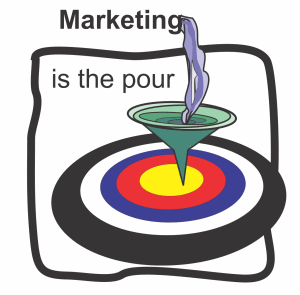Readers like numbers because they believe the numbers represent facts,” Rick, our Digital Director said.
“And facts will get you to Trust,” I responded.
We were sitting on the deck. I was sipping an iced tea.
Rick took a sip of his Pale Ale and went on, “But it depends on how you use ‘em.
Here’s five ways I think are really important:
1. Numbers are specific. Saying you have 3 models from 7 different brands says you have selection better than saying you have ‘superb selection’. More Trust. Less confusion.
2. Numbers are quick. I just flat get ‘em without having to think about it if I use the numbers In 2 for 1 versus the words, the story is much easier to see and comprehend. More Trust. Less calculation.
3. Numbers are easy to test. Changing from a word to a number in a headline or subject line or a teaser on an envelope can be done quickly and easily and you won’t believe the lift sometimes. And price testing. It is so easy on line. More Trust. Definitive answers.
4. Numbers enhance believability. Say you make a robot with a placement accuracy of 2 nanometers and a .002/second cycle rate. You and I do not completely understand those number but the engineers that need the machine will want to know more. More Trust. Personalized data.
5. Numbers adjust to demographics. In pricing, the numbers you use can skew how a product is perceived. Look at the difference in a price of $10 versus one of $10.00 where the cents are included. The higher the price, the more the high-end buyer wants to see the cents as well as the dollars. More Trust. Specific prices.
People believe you can’t shade meanings with numbers so they trust them more than words.”
Jerry Fletcher’s blog recaps conversations with clients, prospects and an unruly mob of business development professionals. They discuss what’s new, what’s old, what’s good, bad and ugly plus creative thinking to find what works. Jerry Fletcher is the ringleader and “Watson” of the dialogue.
Jerry has been researching and implementing small business marketing that builds businesses, careers and lives of joy for 25 years as President of Z-axis Marketing, Inc. Learn more at www.JerryFletcher.com
Schedule a personal appearance. Jerry speaks internationally on Networking, Marketing and Contact Relationship Magic. www.NetworkingNinja.com










